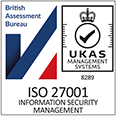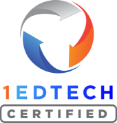Helen Dugmore from Murdoch University on ‘Scaffolding Embedded Employability in Nursing.’ This recording is from our 2022 Perth, Australia MiniBash community event. Videos are for educational personnel only and require a live educational email to watch. You can read the video transcript below.
Transcript:
Thank you. Thank you very much.
I am here to talk about how we have it scaffolded and embedded employability into our curriculum.
As Jacqui said, my name is Helen Dugmore. I am the clinical lead for nursing at Murdoch University. And I’d just like to put it out there that we could not have done everything that we’ve done with Pebel pad without the help of Addison ng, who is our PebblePad support officer, and of course in the early days, Sylvia as well. They have been absolutely instrumental in assisting us and supporting us in getting all that we’ve done, up and running.
Now I just want to give you a little bit of background. And I’ve sort of taken an approach of – I feel a bit like I’ve thrown some confetti out. We’ve got so many examples of how we have used PebblePad in our curriculum.
And I sort of have taken an approach of taking some examples and showing you how we have used them across the three years and ultimately how that has led to import employability for our students.
As a little bit of background, we have around fifteen hundred students enrolled in the Bachelor of Nursing across two campuses. So we have our South Street campus in Perth and also our Mandarin Campus.
We have been using pebble pads since about twenty sixteen in our course.
It started with one champion, Caroline Nielsen Champion champion PebblePad at the very beginning. So it was one unit coordinator in one unit When I started in twenty sixteen, I quickly got on board and very soon after changed all of our paper based portfolios, clinical portfolios, across to eportfolios.
And we have been doing that since twenty sixteen with those. From this photo, you can now see that we are using PebblePad across all of our units in all years throughout our curriculum. This photo shows students in our clinical simulation environment and they’re actually undertaking a case study in that environment. We have got learning activities up on PebblePad, where they have to find information, they have to investigate, gather evidence, and all those sorts of things before they actually undertake a clinical skill.
I think importantly as well, we have quite a diverse age range within our within our cohort.
We have quite a large number of mature age students within our cohort. And as with any cohort, you get a diverse range of digital literacy skills.
We have introduced PebblePad into the very first semester of our first year and we have built it up in complexity across the three years. So we’re actually providing our students with some digital literacy skills And so at the end of the three years, they’re well equipped to work within that digital health space.
Okay. Now I have to apologize as well because my slides are extremely busy because I wanted to tell you so much information.
But this is just a bit of a framework about how we’ve built the employability into our curriculum.
So to give you some context, we deliver we deliver our course across four learning pillars. And those four pillars are cultural safety and professional practice units, They’re evidence based practice and nursing bioscience units.
They’re the nursing clinical skills units, and then finally our nursing clinical placement units. And that’s threaded within each of the years of our curriculum.
Now, supporting at the very end, you can see we’ve got employability Now underpinning employability and Zoe has talked a lot about this this morning is our NMBA RN standards for practice and our NSQHS standards for practice.
Now for students to gain employment, they need to have shown evidence of actually achieving against those those standards. All of our assessments within our course are actually mapped to those standards.
And so you can see across the bottom we have got pebble padded scaffold it into all of our clinical units with all of the assessments and everything underpinned by those standards.
Some of the examples, I guess, of how we’re using Pebelpad in those units through reflective workbooks. And Zoe again spoke this morning about how important reflective practice is in building lifelong skills.
And critical learning for students.
We’re also doing module learning activities. We’ve also got pharmacology and Path esthesiology, and then we use it very heavily within our nursing clinical practice units. And you can see there we’ve got prepack workbooks We’ve got clinical eportfolios. We’ve got video blogs, which I’ll show you briefly. We’ve got expressions of interests, and we’ve also started some micro credentialing with digital badges.
Oh, sorry. I’m just going to go back.
I often get talk about PebblePad, but I think it’s really important to give voice to all of the other academics who have actually taken PebblePad on board at Murdoch University.
And have produced some really innovative learning activities. So this this video is showcasing two of our academics. Martin and Cormack Norton, who are just going through a few examples of how we use it across the three years.
Hi. I’m Martin with the nursing academics. In the first year of this education, nursing students are encouraged and about reflective practice skills. And then the reason that this is an example of a workbook within PebblePad, there has been be developed to help nursing students with their reflective type of skills.
In this example, they’re given a reading that’s hyped into the literature.
What’s the paradigm that we do? They then have to summarize it here and input their information.
Once they’ve done that, they then have to do a personal reflection on how reading for the video that they access impacted them personally.
Once they go to the tutorial class, they have to carry out a group work, but they have a good discussion or a debate on this information.
Following this, they carry into self evaluation on how they feel their self reflection and their understanding weight.
Follow this, they’re equal there to submit this brain on a weekly basis and also share this information with fellow peers in the classroom.
It what you can see in the screen at the moment is a simulated patient. It’s a biography there for the students to work right through. And that’s where pebblepad really contingent its own. We here can see what nursing United patients talk burden to.
What our students can do when they’re looking at Tons, they start their work going through pairing the Tons. The screen uplifted there is one of the toughest students will open up. And then now it’s starting to carry out several important activities. And can you hear is some hand up or notes from our city life attention that they’re taking information from.
They’ll work the way for what’s wrong with Tom using some of these leads here. Prepare to hand over to the following shifts in the developing their communication skills, they can look at other patient reports. And this includes simulated x rays, blood resources.
Importantly, we have a plan. The other thing we can do is we can embed nursing it down documentation. So policies that are taken from our local their industry. Unimportant to see the point here since clinical skills videos.
In Virgin, and there’s excuse art that makes it more complex scenarios and more complicated case studies.
They’re looking to develop their critical of thinking and critical analysis skills to enable them to care for patients with remote specific problems and work in areas such as intrinsic care. And then get the emergency departments. Once they open this tab, the then struck the the then guide you through a structure of a set of general assessments when they don’t have to document their rationale, what they’re doing.
This allows them to verify a clinical assessments and also to critically think about what they’re doing. We also provide them with hyperlinks to evidence based practice so they can provide rationale to the care that they wanted to deliver.
Throughout this entire structure, the students carry out care in real time on their patients.
The beauty of using pedal play for this is that when they get home, they can actually go back into this information away from the clinical environment and review what they’ve done and why they’ve done it. Preparing them in practice and for employability in the future?
If it’s just a snapshot, but I think it’s just a lovely way of showing how we’ve introduced it into first year, second year, and third year. And this is purely just the workbooks. There are other things that we do with with PebblePad as well. But as Martin said, you know, it’s it’s giving them the ability to go home, reflect on practice, develop those skills about lifelong learning through reflection.
My passion is around work integrated learning and clinical placement. So I coordinate all of our practice units.
And I saw when I started the just the advantage that having in an electric portfolio for the student out in the clinical area could hold. Previously, they had paper based portfolios that had coffee stains on them. They got eaten by the dog, all sorts of things. So having the clinical eportfolio, you know, meant that it was all in one place it’s a live document. It means that I can offer academic support as is needed and develop plans to support students. Our portfolios have been through many iterations, and they’re actually going through another iteration at the moment.
But basically, you know, you can see here they’ve got tabs across the top. They’ve got evidence tabs where the students actually complete things in pebble pocket, which is an app on their phone.
And attach it to the assessment.
They do time sheets in pebble pocket and they drop straight into an activity log. Again, we have to provide evidence of students having completed eight hundred hours of practice.
And you know there’s rubrics. We use rubrics extensively for CNF sign off and that sort of thing.
An extension of our portfolios is the video blog.
This has been trialed with a small group of students doing RFDS placements, where they’re giving us instead of doing a written reflection, they’re using an alternate format and so providing us with a video blog.
And that has worked really well. That’s just now a blog page within the portfolios and the students add their video blogs to that. So just another way that we’ve been able to use PebblePad. This example is from Pruandris, who is a third year unit coordinator, who has developed professional portfolio. And this is directly based on feedback that we got from grad Connect about the quality of the applications our students were putting forward. Through grad connect, which is there where they apply for their graduate positions.
Prue worked with careers at Murdoch University, looked at all of the employability skills that were required and has built it into this portfolio.
And you can see here that students have to do a cover letter. They have to build a resume. They have to provide evidence of meeting the NMBA and the NSQHS standards. The beauty is that they often have to go back into their clinical e portfolios and grab evidence from first, second, or third year, to provide against those NSQHS standards or the NMBA standards.
The I think a great part of this is that the students also have to apply for the job. So they actually have to do a a video interview.
And the feedback from the students is that it has just been such a valuable piece of assessment for the students and highly applicable for them going forward into applying for positions.
The students are able to choose any organisation at all that they want to make this application for.
And this student here actually wanted a job at Perth Children’s Hospital, so she actually catered her her application for Perths Children’s Hospital.
I think a perfect example of how we have built up the students employability through the years is this example here where we have just started a collaboration with an aged care provider down in Mandarin called Koolabar care. And they are having our students for their final six week placement with the hope that that transitions into employment with the provider Now the students actually have to put an expression of interest in. And we’ve built these expressions of interest through PebblePad.
And the students actually have to research the organization’s values.
They have to then address their own values and how their values can align with that organization and what they can offer that organization.
Their EOS are at reviewed by ourselves, the academics, and also by the aged care staff.
This student has actually secure herself a a position. So she went through that whole process. She’s done her placement and she’s actually already secured a position with the aged care provider.
So that’s just a brief brief look at what we do, how we’ve built up skills across the curriculum, and leading to employability for our students.
And that’s all from me. I feel like I’ve sped through it. It just feels like like







